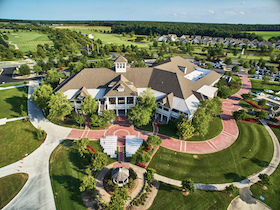Boomer Conflict Looming on Suburban Retirement: Desire Vs. Reality
Category: Baby Boomer Retirement Issues
Note: This article is a continuation of our earlier article, “55+ Home Buyers and Builders Not Exactly in Synch“. See Part 3, a Boomer’s Retirement Self-Assessment.
Baby boomers’ expressed desires about where they want to retire are pretty clear: we want to continue living where we do now – in suburbia*. That sounds fine as long as we are in our 60’s and 70’s. But think about what will happen when we get into our 80’s and 90’s. Studies find most people outlive their ability to drive by 6 to 10 years. In the suburbs if we can’t drive, we will be in very big trouble. Also, at that age moving and starting over with friends and neighbors is not that easy. It sounds harsh, but the reality is that many of us will become trapped in our homes with no easy exit.
Living in the suburbs is also incompatible with several of the attributes baby boomers say they want in their next homes. Chief among them is low maintenance (since suburban homes tend to be big with large yards to maintain). Another is proximity to doctors and shopping. As the Wall St. Journal puts it: “the suburbs are proving a tough place to grow old”. Bottom line: the conflict between where we want to live and the skills necessary for survival are setting up for a very big problem for millions of baby boomers down the road.
A Bright New Idea – Transform the Suburbs
One obvious solution to this problem is to scrap the suburbs as a retirement destination. Instead, we could move to a city, small town, new urban community, or active adult community where driving is not necessary. A place where proximity to life’s essentials is easy by walking or public transportation. But now another idea, transforming the suburbs so they are more livable is emerging. The implications of this movement are exciting for many suburban towns.
The Wall St. Journal had a fantastic article written by Glenn Ruffenach on this development last week: “Making Suburbia Livable“. The piece centered on towns on the south like Fayetteville (Georgia), Lakewood (Colorado), and Atlanta (GA). These forward-looking towns have hired urban planners and design firms to help them solve the problem of the future – how to make the suburbs livable for all of the boomers that want to grow old there.
One of the most interesting solutions is happening in Lakewood, where a failed shopping mall provided the necessary land for a planned community, Belmar. Here many delighted residents are enjoying 22 blocks of city living —offices, homes, shops, restaurants, and entertainment— right in the middle of suburbia. As opposed to homes set on 1 acre lots, here there is sufficient density to allow “walkability”, where one can walk or to take public transportation for access to shopping, restaurants, and medical services. “Walkability” comes right from the New Urbanism movement, which builds easier access to essentials while leaving the car in the garage.
The need for communities to develop alternatives to the suburbs, or to improve the infrastructure that is already there, is imperative for a number of reasons. At the peak of baby boomer aging bulge in 2030, one out of every five Americans will be 60 or older. Communities will not have enough resources to care for all the seniors who in effect become prisoners in their own homes at the end of life. And as other, more enlightened boomers see the light and flee the suburbs for more livable communities, these towns are going to lose essential tax revenues.
Fortunately some forward-thinking towns are now beginning to hire urban planning experts to plan for communities to will meet the needs of the future. Adding sidewalks, busses or other transportation systems, and neighborhoods with high density housing are some of the alternatives being considered.
Bottom Line
We baby boomers are a stubborn lot. We always want what we want,even if it’s not so good for us. It seems obvious to us that our desire to live in the suburbs is a good example. Look for the 3rd part of this series, which will be a self-questionnaire to help baby boomers identity and prioritize their retirement plans.
*An AARP survey found that 85% of people want to live in their existing homes as long as possible. The NAHB/Met Life study of the 55+ Market had results that pointed in the same direction but not as strongly; that survey found 62% want to stay where they are.






Comments on "Boomer Conflict Looming on Suburban Retirement: Desire Vs. Reality"
Jackie Gaines says:
Since I'm in my early 70's, I have been searching for a retirement community as you stated---living in a ciy area where you don't have to drive to get where you want to go. In addition, I'm looking for medical facilities that are connected to large hospitals, not just local ones.
Thank you